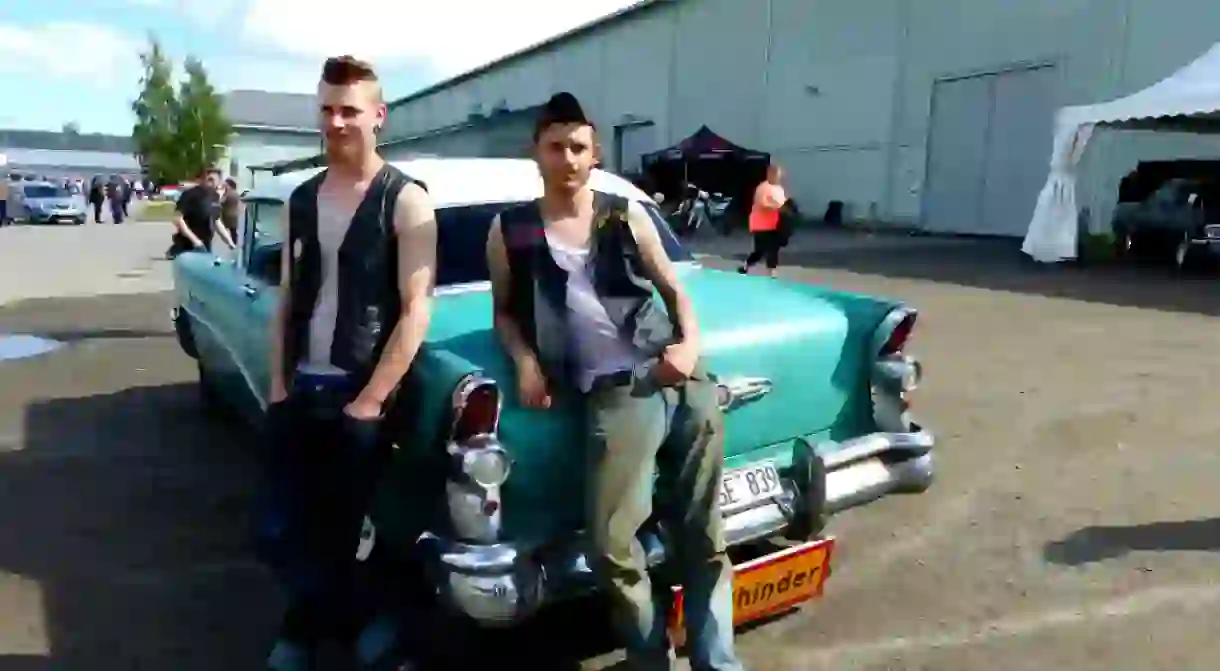Why is This Swedish Subculture Dressing Like it's the '50s?

The Swedish fashion subculture you’ve probably never heard of, Raggare, was, like many trends, rooted in rebellion and music, and while it’s not quite as strong or influential as it used to be it seemingly refuses to die, as new generations take up the cause and make it their own.
Back in the 1950s, Raggare—which today translates to “greasers” but back in the day meant “to pick up girls,” took hold in post-war Sweden, with Swedish teens falling in love with the teen rebellion films and music that were flooding in from America.
While raggare did have some popularity in several other European countries such as Denmark, Norway, and Germany nowhere did it take off—and remain an integral part of the culture—as in Sweden, where they are as essential to the national identity as Abba, meatballs, and sill. And strangely enough, the whole sub-culture, right from the start, was driven by men.

While adherents certainly dress the part of a 1950s greaser and his girl—complete with slicked-back pompadours, leather jackets, and often a pack of smokes tucked into the sleeve of a t-shirt—it’s the cars that really drive the style. Streams of raggare hotrods are seen so regularly in big cities and small towns, with appropriate music blasting, that everyone merely smiles fondly and gets on with their day.

The 1950s in Sweden were prosperous due to the country’s neutrality in the Second World War, allowing teenagers the possibility of buying a hotrod, but it was also a conservative time, and that meant that parents frowned upon this subculture based on perceived fighting, drinking, sex, and rock ‘n roll. Naturally, parental disapproval made this new American rebellion more popular than ever and raggare spread.
Hour upon hour was spent in front of the mirror and then, when they headed out, raggare teens cruised cities and towns, gathering at simple cafés to dance to the jukebox, flirt, and perhaps pick a fight or two—and because they weren’t allowed to legally drink, plenty of Swedish moonshine was consumed (although if you were caught spiking your drink you were thrown out)

Getting the look just right was of supreme importance. Ragarrewere the first to wear jeans to Stockholm, which were brought back by friends who had traveled to the States. Wrangler Blue Bells were the first ones to hit the scene, followed by Lee and eventually Levis. Leather boots with buckles and leather jackets or vests over t-shirts (with their club name emblazoned upon it) completed the look. Brylcreem was used to keep hair in place and a ducktail was a badge of honor.

For the girls, it was towering stilettos and at a time when little makeup was normally worn the girls applied eyeliner and bright red or pink lipstick, which was quite scandalous. The hair was worn big or in a high ponytail, and the skirts were skin tight pencil. And despite the occasional fight or driving without a license the general fear society had for raggare was more or less unfounded. These were just a bunch of kids searching for an identity—think Grease or Cry Baby or Rebel Without a Cause.
Today there are two kinds of raggare: the old-timers who eventually moved on to family life and revisit their youthful rebellion for fun, and the new generations who have embraced a slightly altered version of rebellion, one that tends to lean more towards the American south, sometimes complete with the Confederate flag and a look that is more biker than greaser.

No matter what you think, the most interesting thing that has come from the raggare movement is that Sweden is rumored to have the largest stock of 1950s and ’60s cars and parts in the world, perhaps with the exception of Cuba. So if you’re walking down the streets of Stockholm or even cycling along the sea in Malmö don’t be surprised if you suddenly hear Elvis playing at top volume as a convertible hotrod cruises by, filled with teeny boppers who look like they walked off the set of Grease.













